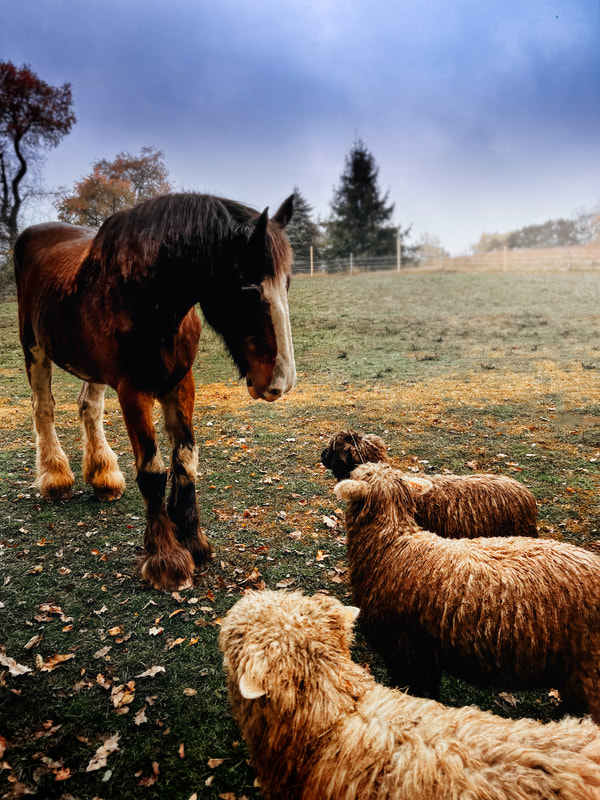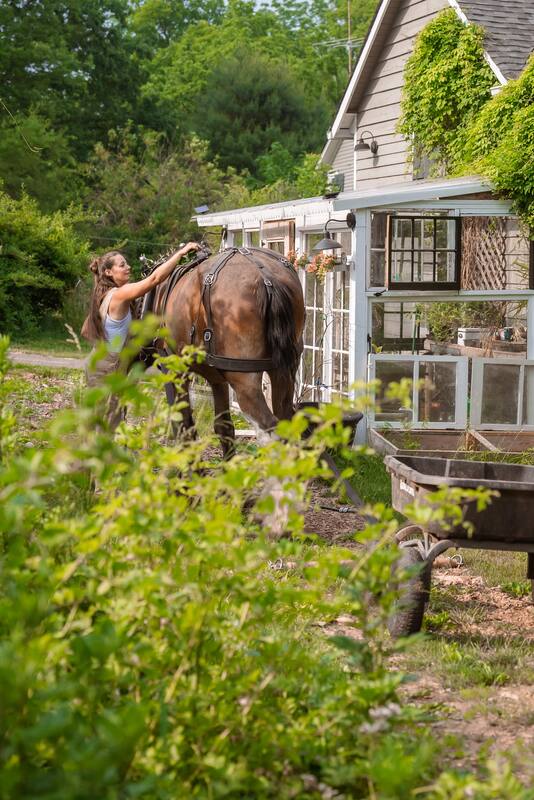|
I have learned there is so much more to pasture management than rotational grazing, cover cropping, and stock density (the amount of animals in a given pasture space). And it’s no surprise that proper pasture management is one of the most disregarded facets of farming and homesteading—it’s extremely complicated! But it’s also extremely important and can be a huge money saver on feed costs. Not to mention healthier animals mean less vet bills. Clydesdale girl over here is completely open to lowering hay costs. 🙋🏻♀️
As of now, I cover crop my fields for animal forage and soil health. I rotationally graze multiple species. I return manure to the soil. But I’m learning there’s lots more that I can be doing. For example, understanding the nuances of each species’ behaviors alone is hugely relevant. “Compared to cattle, sheep eat a greater variety of plants and select a more nutritious diet, though less so than goats. Sheep will graze 60% grass 30% forbs and 10% browse if available.” - University of Nebraska Extension “Horses tend to be the hardest type of livestock on pastures. Pastures with cattle are usually more uniformly grazed, weeds are not as large a problem, and overgrazing is not as immediate… Horses tend to group around certain areas, killing the forage in this area and exposing the bare ground to erosion and propagation of weeds. Some horses tend to defecate in localized areas which causes manure buildup and reduced palatability of forage in these areas. The most difficult behavioral trait to overcome in horses is their selective grazing instinct.” — Oklahoma State University Extension If that’s not enough to think about, then weather, forage type, soil nutrients, moisture quantities, turnout time, species type, season, palatability, supplementation of forage with feed and/or grain, and nutrient utilization are also factors. What does this all mean? I’m doing a deep dive this fall/winter in rolling out an even better forage management plan into my farm for spring. With two horses and five sheep as my main grazers, I think my 6 acres has plenty to offer. Let’s see how low these hay bills can go. Why? Self sufficiency and land stewardship. Fall foliar sprays can be used to offer fruiting trees a boost before they go into dormancy. This way the trees can store the added nitrogen, sugars and carbohydrates in their roots where they will be ready and waiting for spring budding and leaf set.
Applying fertilizers, maintaining nutrient rich soil, and installing guilds around trees are all helpful options for feeding orchard stock. But if the tree is unable to absorb the nutrients due to soil issues, damaged roots or disease, leaf sprays are another way to introduce the tree to nutrients and microbes. This recipe belongs to Michael Phillips, author of The Holistic Orchard, so I don’t feel it’s my place to share it. You can check out his website for the recipe. It all comes back to the garden.
Every animal ultimately has to serve two roles to become a part of our working permaculture ecosystem—contribute to the garden, and contribute to the animal health system. The only creature that doesn’t do both is honeybees, but their pollination contribution is unmatched. For me, one type of animal to fulfill each role is enough. Too many small hoofstock, for example, throws off the whole system. Here’s what I keep: Bees: pollination, honey, wax Ducks: eggs, down feathers, slugs, snails, insect garden control, larger animal parasite reduction via rotation grazing, winter garden clean up Geese: ward off small predators like hawks for the ducks, graze pastures, reduce weed height, down feathers, eggs Livestock Guardian Dogs: Protect all stock, keep gophers out of garden Sheep: wool, wool seconds for biodegradable mulch for garden, compost, parasite control for horses Horses: riding, manure for compost, break sheep parasite cycle, pulling/driving Guinea Fowl: tick control, compost Cats: Rodent control in barns and growing spaces, tick reduction Everything is connected and nothing exists in isolation. I'm so excited and thankful to share that my latest book, The Sustainable Homestead, is now available for pre-order on Amazon.com. The book itself will release on March 28th of next year! I have illustrated loads of graphics to help visually communicate many of the ideas I'm sharing here. And in addition, I'm thrilled that my publisher (Quarto Knows) allowed me to do the photography for this project too. Here's the description my editor wrote for the listing on Amazon. Join the permaculture revolution! Author Angela Ferraro-Fanning (Axe & Root Homestead) shares techniques and tips for a homestead with synergy between soil, plants, animals, and trees. |
Angela is the farmer and content creator behind Axe & Root Homestead® LLC. This historic six-acre permaculture farm is home to two Clydesdale horses, ten honeybee hives, five sheep, two guardian dogs, barn cats and a flock of 40 geese and ducks. The farm produces maple syrup, fruit from a small orchard and loads of garden produce for consumption, preservation and donation to the local food pantry.
The Sustainable Homestead is available NOW!
Categories
All
|


